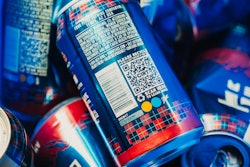Plastic plays a fundamental role in the packaging industry by protecting our products, especially in sectors such as food. Consider that by 2050 we will have over 9 billion people on our planet, which will increase the importance of protecting and preserving our food chain while avoiding food waste from farm to fork.
Unfortunately, in recent years, plastic has been under siege as a material when it comes to sustainability, mainly because too much of it has found its way into the environment at the end of its use. This is mainly driven by the lack of a collection and recycling infrastructure and the perception of plastics as “waste,” or having little to no value. However, what the world has isn’t a “plastics problem” but rather a litter issue, and by introducing and advocating for additional capacity for chemical recycling, what is now considered waste can be transformed into value.
Mechanical recycling only a step
Mechanical recycling is a good step, but not a long-term solution. Today, much of the plastic (like polyolefins) used in food packaging can’t be recycled into new food packaging for safety reasons. That’s because most of the industry uses mechanical recycling, often turning the collected packaging waste (especially polyolefins) into non-food packaging.
While the beverage industry has certainly made large strides with PET and mechanical recycling to food applications, in both cases, the recycled material can only go around the circular economic cycle a few times before the polymer chains degrade to the point where quality cannot be maintained in the finished pack.
While that is certainly better than ending up in the environment, it isn’t the long-term circular economic solution the industry needs. We want to recycle our packs into brand new food-grade packaging—again and again.
Chemical recycling good in long term
In the case of polyolefins, chemical recycling using processes such as pyrolysis or gasification to take the polymers back to their essential building blocks of carbon and hydrogen. This material can then use existing infrastructure to repolymerize these elements into a wide range of polymer types.
The main benefit is that resulting polymers are food grade, even to the point of being chemically indistinguishable from that made from source crude oil. In addition, one main input fraction can come from laminated multi-layer films or flexible packaging. Today, those are considered low value, especially if they have high PP or PE content.
In terms of the life cycle impact, LCA studies show a neutral to slightly better carbon footprint for carbon dioxide in directing plastic waste to pyrolysis versus directing to energy creation/incineration. This can be further improved in the longer term via mass a balance approach, augmenting flexible packaging waste with other bio-based waste, such as that used in cooking oil or forestry waste. In fact, with pyrolysis, for every 1.5 kg of input, roughly 1 kg of output can be expected, with some of the input powering the process itself. This means that all waste source inputs should be considered. The main outcome is driving demand for low-value waste or by-products and continually creating food-grade polymers.
What’s still needed from industry
The introduction of chemically recycled polyolefins into the end user portfolio will help to drive future demand for these materials and signal the need for geographic and capacity expansion. These materials come with an on-cost, so a careful analysis and business case needs to be in place. End users also should look to move multi-material structures in their portfolio—such as high-barrier, mixed material laminations—to mono-materials or at least to polyolefin-based structures, where possible. This approach will help to feed the supply side of the circular economic model, offering higher yields to the recycling process.
As an industry, advocation to include chemically recycled polymers in legislation to be considered as post-consumer recycled (PCR) materials will help avoid potential tax penalties and help companies meet their sustainability targets. It’s important to understand that no single company or end user can make this happen alone. It will take all sectors of the circular economy and collaboration between competitors to truly bring this real solution into existence at speed and scale. Only then will the plastic “waste” issue start to be addressed for the long term.
The author, Mike Ross, is Global R&D Packaging & Sustainability Lead at Unilever Food Solutions in The Netherlands. He is a member of IoPP’s Sustainable Packaging Technical Committee and Certified Packaging Professional Lifetime. For information on IoPP membership, educational offerings and networking opportunities, visit www.iopp.org.

























